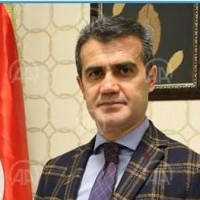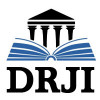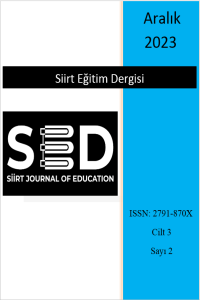Research Article
Aim & Scope
Siirt Journal of Education (SJE) is published twice a year (June and December) in online format. SJE, a peer-reviewed and scholarly journal, adopts an open-access approach. After the initial review by the editorial board, the manuscripts to be published in the journal are subjected to a rigorous evaluation process by the review board. During this process, the manuscripts are scientifically evaluated by the Review Board using the double-blind peer-review method. Ideas, opinions, thoughts, suggestions, etc. presented in the manuscripts are under the responsibility of the respective author. No transaction fee is charged for article acceptance or process procedures.
Siirt Journal of Education (SJE) publishes research in the basic domains of educational sciences using scientific research methods and techniques. The primary objective of the journal is to contribute to the improvement of the educational process and outcomes in the fields of Computer and Instructional Technology Education, Culture of Religious and Moral Knowledge Education, Educational Sciences, Fine Arts Education, Mathematics and Science Education, Special Education, Psychological Counseling and Guidance, Social Sciences Education, Primary Education, Turkish Education, and Foreign Language Education.
The following studies are within the scope of publication in accordance with the goals of SJE:
• Scientific studies that investigate, question, and develop problems and practices at all levels of education,
• Scientific studies on enhancing educators’ competencies and instructional activities,
• Original and authentic studies designed with quantitative, qualitative, and mixed methods on all fields of education,
• Scientific studies that might contribute to the holistic development of students across all levels of education,
• Scientific studies that adhere to appropriate research methodologies, and critically evaluate theory, models, and research methodologies pertaining to education,
• Interdisciplinary scientific studies conducted by researchers across different fields of research,
• Scientific studies aiming at the development, testing, and integration of educational technology and instructional materials into teaching activities.
The manuscripts submitted to the journal undergo an initial examination of formatting as the first step in the review process. Subsequently, manuscripts prepared in line with the journal template are submitted to the respective editors. Manuscripts are reviewed by the Editors and the Editorial Board for compliance with the journal’s editorial guidelines, and accepted manuscripts are forwarded to the field editors. In the process that follows, manuscripts are assessed by the field editors in terms of their contributions to the field’s knowledge, and referees are assigned to the articles deemed appropriate. In the preliminary review stage, the manuscript’s suitability with publication ethics, journal’s publication ethics, scientific authenticity, up-to-datedness, contribution to education, spelling rules, and article writing template are taken into consideration. In case of need, manuscripts are returned to the authors for revision in accordance with the critiques and suggestions provided by the referees. In conformity with the open-access policy, journal issues and articles are available on the journal’s website, and the complete texts of the articles can be retrieved in PDF format.
Author Guidelines
Studies to be submitted to Siirt Journal of Education (SED) should be prepared in accordance with the following rules.
Page Layout: A4 Vertical, Margins (Normal) (2.5cm on 4 sides)
The SED does not limit the number of pages or the number of words in an article. However, the editorial board or the scientific board may state that the work can be shortened without losing its quality.
Title and Footnotes
The title of the article should be justified, 12-point, bold, Times New Roman font, center-aligned and single-spaced. The title should be maximum 15 words and the first letter of each word should be capitalized, except for conjunctions.
After the study is accepted, the name and surname of the author(s) of the study will be written in bold, bold, 11-point, Times New Roman font, with the surname capitalized and centered, and if the number of authors is more than one, in the order determined by the authors. Along with the title of the author(s), the full name of the place of work, city-country information, e-mail address and ORCID number should be indicated with footnotes (*) paired with the author's name or names under the title and should be included in the footnote at the bottom of the first page of the article. This addition will be made after the article is accepted. Authors are requested not to include such a footnote at the time of manuscript submission, as it may lead to guessing of author identities.
Additional explanation for footnotes: If the study was presented as a paper in any scientific event, the footnote symbol (*) should be placed in the title of the article and the name, place and date of the event should be stated at the bottom of the first page of the article. If the study was supported by any research institution or fund, the footnote symbol (*) should be placed in the title of the article and the name of the organization providing the support, the number of the project and the date of completion should be stated at the bottom of the first page. If the work is derived from a graduate thesis, the footnote symbol (*) should be placed in the title of the article and the name of the thesis, the name of the advisor and the date of completion should be indicated at the bottom of the first page. All information in footnotes should be in Palatino Linotype font, unindented and in 10-point font.
Abstract
Studies can be prepared and submitted in Turkish and English. The aim, scope, method, findings and conclusion should be briefly reflected in the abstract. The first page of each study prepared in Turkish should include a short abstract in Turkish and English. References should not be given in the abstract. Turkish and English abstracts should be between 150-200 words. Abstract/Abstract sections should be written in Times New Roman font, 10 pt, 6-0 pt paragraph spacing and single line spacing.
Keywords
Under each short abstract, there should be 2-5 keywords describing the study. The keywords of the study should consist of at least 3 and at most 5 words.
The main sections of the studies are in order;
Introduction
First level titles should be written in Times New Roman font, 11 pt, left justified, all capital letters, single line spacing, 1.25 paragraph indentation and 6-0 pt paragraph spacing. Second level titles should be written in Times New Roman font, 11 pt, bold, left justified, with the first letter of each word capitalized. Tab key should not be used at the beginning of paragraphs and enter key should not be used between paragraphs. Third level titles should be written in Times New Roman, 11 pt, bold, italicized, left justified, with only the first letter of the first word capitalized. A one-letter space should be left between words and after punctuation marks.
Method
The research model, population-sample/study group, data collection tools, validity and reliability of data collection tools, data collection techniques, data analysis, limitations should be detailed.
Results
The results obtained in the research can be explained with tables, figures, graphs or pictures in line with the purpose of the study.
Discussion, Conclusion and Recommendations
The main ideas that emerged in the light of the findings obtained in the research should be explained and discussed. Recommendations should be made in accordance with the findings and results of the study.
In addition, suggestions can be made for future studies and applications that will contribute to the literature.
References
The references should be arranged in accordance with APA 7 referencing principles in Times New Roman font, 11 pt, single line spacing and 6-0 pt paragraph spacing
Appendix
Appendices should be given as a new page after the bibliography section. Each appendix should be listed as Appendix 1, Appendix 2, etc. In the texts presented in this section, the font specifications used in the main text apply.
Tables and Figures
Tables and figures in the text should be given in accordance with the sample article template.
Extended Summary
At the end of the article, an extended summary of the study in English should be included. This section should be between 1000 and 1500 words. As in the content of the article, it should consist of "introduction", "method"; "conclusion, suggestion and recommendations" titles. In the extended summary section, the font features used in the article should be used.
You can access the sample article template prepared in line with SJE writing rules from the Forms and Templates tab.
Correction Schedule
The author(s) who have received suggestions for revision of the manuscript should indicate on the "Manuscript Revision Report" sent with the referee reports, the action taken based on the correction/amendment suggestions requested by each referee in the chart by indicating the page number
Ethical Principles and Publication Policy
Similarity Ratio Control
Siirt Journal of Education adopts internationally recognized principles regarding ethical situations, errors, or retractions. It is among the critical responsibilities of the editorial board to prevent the withdrawal of scientific studies submitted to the journal. Any example of unethical behavior that might be observed in scientific studies is unacceptable. The content of the submitted scientific research to the journal is declared by the authors to have been prepared by utilizing original sources. Within this scope, manuscripts submitted to the journal are accepted after being checked by the plagiarism program (Ithenticate). The similarity rate of the manuscripts submitted to the journal should not be more than 20%.
Precautions Taken Against Ethical Violations
Siirt Journal of Education has adopted the “COPE Code of Conduct for Journal Editors” as a basic principle to fulfill its publishing responsibilities. Under this principle, the editorial board, referees, and authors are obliged to act in line with the procedures in the journal application and evaluation processes within the scope of ethics committees. Siirt Journal of Education declares that any unethical study including ethical violations such as misuse of other people’s work, relationship of interest, etc. is unacceptable and that all legal rights are reserved.
The similarity ratio of the candidate manuscripts should be uploaded to the journal by the authors. Furthermore, it must be declared by the corresponding author by uploading the similarity ratio declaration file that there is no plagiarism in the manuscripts. The submitted manuscripts are additionally examined for similarity by the journal secretariat using the Ithenticate program. Manuscripts that exceed the similarity rate determined by the journal will be returned to the authors. In case of any ethical complaints regarding published articles within 12 months, the editorial board undertakes a review of the article. Documents related to the respective complaint should be submitted to the editorial board via the journal’s e-mail.
Siirt Journal of Education, editorial board, referee, and author responsibilities, and scientific principles are mentioned one by one under the headings of publication ethics and abuse declaration in accordance with the “COPE Code of Conduct for Journal Editors”.
Responsibilities of Editors
The editor, editorial board, and field editors serving in Siirt Journal of Education must fulfill their responsibilities concerning the following publication decisions, confidentiality, information disclosure, and handling of disagreements.
The editor bears the responsibility for rendering the decision to publish manuscripts submitted to the journal, following the assessment by field editors and the evaluations by referees. In the decisions of the publications, the editors evaluate publications without taking into account the ethnicity, race, gender, sexual orientation, religious beliefs, doctrine, nationality, political views, or article proposals of the authors. The editor’s decision is grounded in the conformity of the article with the specified scope and objectives of the Siirt Journal of Education, considering the originality, significance, validity, and up-to-datedness of the study.
Confidentiality: The Editorial Board cannot share the scientific studies submitted to Siirt Journal of Education with persons or institutions other than the author, referees, members of the editorial board, and the publishing organization.
Information and Differences of Opinion: The unpublished content of the scientific study submitted to the Siirt Journal of Education cannot be utilized for personal research purposes by members of the editorial board and individuals assuming responsibility for the publication of the relevant study without the author’s permission.
Responsibilities of Referees
The evaluation of all studies through “Blind Review” directly affects the quality of the publication. This process ensures the publication’s objective and impartial evaluation, providing confidence. Siirt Journal of Education conducts the evaluation process with the principle of double-blind review. Referees cannot directly communicate with authors; evaluations and comments are conveyed via the journal management system. In this process, evaluation forms and referee comments on the full texts are conveyed to the author(s) through the editor.
In accepting the evaluation process of the manuscripts approved by the editor/editorial board of Siirt Journal of Education, referees are obliged to adhere to the following responsibilities. In cases where referees deem the content of the submitted manuscript for evaluation to be inadequate or inability to assess the manuscript within the proposed evaluation period, the editor should be informed and the manuscript should be withdrawn from the evaluation process.
The manuscript proposal forwarded to the referees should be treated as a confidential document, and its content must not be disclosed to third parties.
Evaluations made by the reviewers should be made in accordance with standards of impartiality. Personal criticism of the author is deemed inappropriate. The opinions and suggestions made by the referees should be supported by arguments aligning with scientific principles and expressed clearly and comprehensibly.
In relation to the submitted proposal manuscripts, referees might be requested to include previously published scientific research in the proposal article; in cases where such studies are not already present in the proposal manuscripts, referees might be asked to incorporate them. The citations from sources should be examined by the referees for compliance with scientific principles and writing rules, and any errors should be indicated. The referees evaluating the proposal manuscript should inform the editor, editorial board, or field editors about any similarity or originality between the proposal manuscript and previously published works.
Unpublished manuscripts proposed for evaluation by referees should not be utilized for personal benefit by using specific data or thoughts related to the research content after being examined by the referees. Referees should not consider conflicts of interest arising from potential benefits or harm to the authors, companies, or institutions mentioned in the submitted works for evaluation.
Rights and Responsibilities of Authors
Authors should emphasize the purpose and importance of their study as well as its originality. The proposal manuscripts submitted to the journal should conform to the journal’s reporting standards.
Authors should not simultaneously submit the proposed manuscript for publication to multiple journals and they are required to affirm the originality of the entire manuscript.
Authors should indicate the sources of the data used in their manuscripts within the text and the bibliography following the spelling rules. Individuals assuming authorship in the proposal manuscript submitted to the Siirt Journal of Education should significantly contribute to the formation of the manuscript in the processes of design, conceptualization, methodology, implementation, or interpretation of ideas. The authors assume responsibility for the accuracy of the names and contact information of all authors contributing to the proposal article.
The unanalyzed data from the manuscripts submitted by the authors should be stored, allowing its presentation to the editor when deemed necessary. In the case of an error or uncertainty concerning the manuscript submitted by the authors, it should be reported to the editors.
Note: Authors cannot withdraw the copyrights and all publication rights of the articles they submit to our journal without the consent of the editorial board of the journal. This assurance is provided through the Copyright Transfer Agreement, wherein the authors consent to the transfer of the copyright to our journal.
Price Policy
No fee is charged to the author or his/her institution under any name.
No article processing fee is requested from the authors at any stage of submission, evaluation and publication of the articles.
Indexes
Journal Boards
Auto-generated board - Please Edit This Title

Auto-generated board - Please Edit This Title


Auto-generated board - Please Edit This Title

2007 yılında İnönü Üniversitesi Eğitim Fakültesi Rehberlik ve Psikolojik Danışmanlık anabilim dalından lisans, 2010 yılında Yüzüncü Yıl Üniversitesi Sosyal Bilimler Enstitüsü Eğitim Bilimleri anabilim dalından yüksek lisans ve 2016 yılında Ankara Üniversitesi Eğitim Bilimleri Enstitüsü Eğitimde Psikolojik Hizmetler anabilim dalından ise doktora derecesini almıştır. Dr. Çam, 2021 yılında Eğitim Psikolojisi alanında Doçent unvanı almaya hak kazanmıştır. 2017 yılından bugüne atandığı Muş Alparslan Üniversitesi Eğitim Fakültesi Rehberlik ve Psikolojik Danışmanlık Ana Bilim Dalında öğretim üyesi (Doç. Dr.) olarak görev yapmaktadır.


Dil Editörü
Yayın veya Danışma Kurulu



1974 Eskişehir doğumlu olup, 1996 yılında Eskişehir Osmangazi Üniversitesi Fen Edebiyat Fakültesi Biyoloji bölümünde lisansını tamamlamıştır. 1996 yılında Anadolu Üniversitesi Fen Bilimleri Enstitüsü Biyoloji Anabilim dalında Yüksek lisansını tamamlamıştır. 2005 yılında Fırat Üniversitesi Fen Bilimleri Enstitüsü Biyoloji Anabilim dalında Doktorasını tamamlamıştır. 1999 yılında Dicle Üniversitesi Siirt Eğitim Fakültesinde Öğretim Görevlisi olarak göreve başlamıştır. 2007 yılında Siirt Üniversitesi Eğitim Fakültesinde Bilgisayar ve Öğretim Teknoloji Eğitimi bölümünde Yardımcı Doçent Doktor olarak atanmıştır. 2014 yılında Fen eğitimi alanında Doçentliğini almıştır. 2020 yılında ise Siirt Üniversitesi Eğitim Fakültesi Matematik ve Fen bilimleri Eğitimi bölümü Fen Bilgisi Eğitimi programında Profesör Doktor olarak atanmıştır. Halen aynı bölümde görev yapmaktadır. Yazar Üniversite senato üyesi, Üniversite yönetim kurulu üyesi, Dekan, Bölüm Başkanlığı, Proje Yönetim Ofisi koordinatörlüğü, Teknoloji Transferi Uygulama ve Araştırma Merkezi müdürlüğü gibi idari görevlerde bulunmuştur. Çalışma konuları arasında çevre eğitimi, doğa eğitimi, fen eğitiminde teknoloji entegrasyonu, yapay zeka destekli eğitsel uygulamalar bulunmaktadır.


Area of expertise: Applied Mathematics
Faculty/Department: Natural and Agricultural Sciences, Institute of Groundwater Studies




















